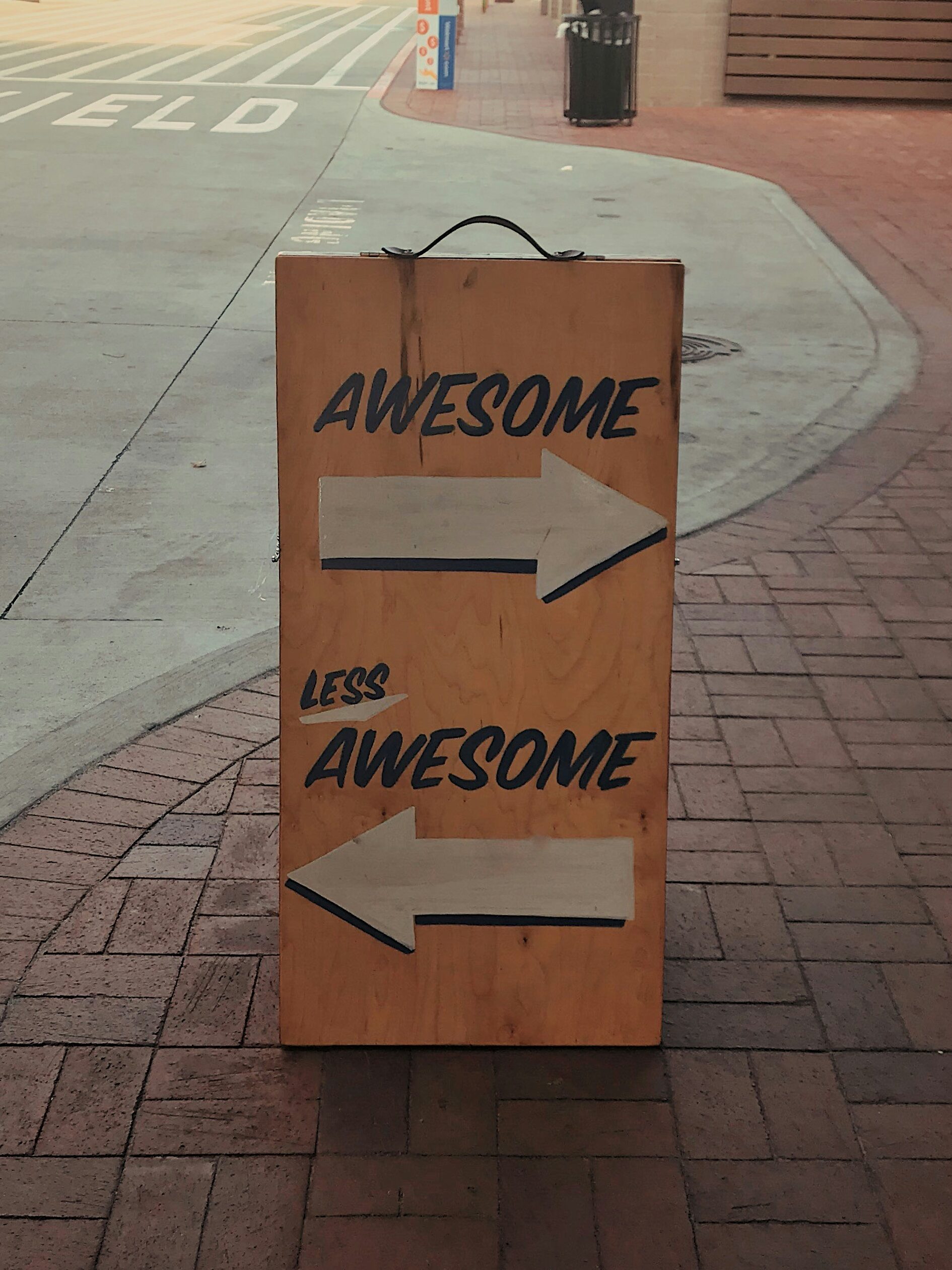- Quick Links:
Something to Read
Slow down for a minute. Close your eyes. Scan your body. Where are you holding tension right now? Take a deep breath. Relax.
– James Clear from the 3-2-1 Thursday newsletter
I’m holding tension in my shoulders right now – where is yours? Thanks to this reminder from James, I just released that pressure and the knots in my neck are already thanking me for taking a break from adding to the mess.
Every Thursday, I get bite-sized reminders that reevaluate my perspective and check my mindset through the free 3-2-1 Thursday newsletter from James Clear. He’s the author of wildly popular and impactful, “Atomic Habits: An Easy & Proven Way to Build Good Habits & Break Bad Ones”. If you haven’t read this book yet, I highly recommend it.
Before you take on an entire book, how about just start reading the 3-2-1 Thursday weekly collection?

It takes me about 2 minutes to read, but the ideas end up swimming in my head all day. I always read the entire newsletter out-loud to myself. While I may appear a bit crazy to my coworker (my dog Marty), research suggests that “reading words aloud make them easier to remember than reading them silently” (Hendricks, 2018). I want the tips from the 3-2-1 Thursday collection to stick with me until the next newsletter arrives. Often, I find myself writing the ideas that resonate strongly on post-its and sticking them to my computer monitor.
These little reminders of the ideas that resonate with me also traces back to James’ book, Atomic Habits. I read it a few years ago and thanks to his philosophy of habit stacking, I fill my coffee mug with water and drink it while the coffee brews. James describes habit stacking as “identifying a current habit you already do each day and then stacking your new behavior on top.”
I will most definitely drink coffee to start my day, so…I use the excited anticipation to successfully get some hydration before I turn it all around with lots of coffee. There is something so simple about using my mug for water versus getting another cup dirty. The mug usage for drinking water has oddly revolutionized my morning. Thus, the habit stacking is working in this situation and I’m proud of that.
Here’s my challenge to you this month, team:
- Drink a mug of water while your tea/coffee brews in the morning.
- Sign up for James’ 3-2-1 Thursday newsletter.
- Get a hard copy of “Atomic Habits: An Easy & Proven Way to Build Good Habits & Break Bad Ones” from local New Jersey bookstore River Road Books. Find the digital or audio book from your online retailer of choice.
- I’d love to hear what habits you’re stacking…share them with me back on the LinkedIn Talking Points page.
Something to Hear
What was most valuable to you out of this conversation? …the thing they found most valuable may seem obvious to you. However, to them, it was a lightbulb moment.
This quote comes from a 2021 episode of the podcast, “Women at Work” and prompted me to wonder…how confident do you feel when giving feedback? Giving and receiving feedback can bring with it a good amount of anxiety – it’s challenging to be the giver and it’s challenging to be the receiver.
Earlier this month I listened to a great podcast about giving feedback – and how to improve the experience for both the feedback giver and feedback receiver. When I went to reference the podcast, I learned it was a rewind of an entirely different podcast from 3 years ago. …and here’s where my inner monologue started spinning. Would you, as a reader of this collection of ideas, find it valuable to be pointed to a podcast from three years ago?

And that’s where I had to give myself some feedback…
One of the most important principles I want to adhere to when writing this collection of ideas is that there are plenty of ideas out there. The job I have assigned to myself is to find and share interesting information as a curated list of quick and easy things you can apply to your own life and work. It is my belief that we can all benefit from reviewing our feedback-giving skills.
Often, I feel as though we’re all looking for the shiniest, newest, most innovative idea to share – I definitely fall prey to this mindset. However, what I must remind myself all the time is that while our modes and context of communicating are ever-changing, the theories behind human connection and communication are hard-wired in our brains. The framework of feedback remains mostly constant – there are general principles from which we can apply to any context or situation. Thus, our focus can shift to refreshing our knowledge of best practices…and practicing those skills to apply the principles effectively.
Perhaps (stay with me here…) we even ask for feedback about how we give feedback. Can you even believe how meta we are getting – feedback about feedback? It’s that beautiful communication loop shining for all to appreciate.
After listening to the episode, here’s what stuck with me:
- Make it a feedback conversation –two people talking together, rather than only the feedback-giver.
- When asked to give feedback, confirm the type of feedback someone is looking to receive…there are three main types: (1) appreciation, (2) coaching, and (3) evaluation.
- “I’d love to give you some feedback, what would be most helpful to you right now? Do you want me to let you know what I love about your work? Would you like some coaching and advice? Or would you like to know where you stand?”
- Give 5x as much appreciation feedback than criticism. (Interesting? Read more here.)
- Schedule a regroup two weeks after the feedback conversation to hear how things are going.
Check out the 35-minute, May 3, 2021 episode of HBR Women at Work titled, “The Essentials: Giving Feedback” by visiting the HBR Women at Work website or wherever you get your podcasts.
FYI – the podcast I was listening to that replayed the Women at Work episode was: HBR on Leadership episode #41, “The Art of Giving Feedback.” Find it here or wherever you get your podcasts.
Something to Do
Write a recommendation for someone on LinkedIn.
One of the most public ways we can provide appreciation feedback for others is by writing them a LinkedIn recommendation. A benefit for us in writing about others is that the feedback can bolster relationships, while making others feel good about themselves and their work.
Reciprocation in recommendations is common – you can write a recommendation spontaneously for someone you appreciate, then ask them if they would write for you. These snapshots of feedback provide a public repository of your good work from the perspective of others around you.
Not sure what to include in a recommendation? Try this framework:
- Start with a single sentence that describes what you appreciate most about this person.
- Share a few details about how long you have known them and the capacity in which you worked together.
- Give a specific example of an experience you had with them where they exhibited their skills and expertise.

Here’s an example of this framework in practice…
Moana is incredibly tenacious leader who prioritizes the interests and benefits of her team in the face of adversity. I was introduced to Moana four years ago and we completed several projects throughout this period. Each time I have worked with Moana reminded me of how much I appreciate her skills and creativity. One example I remember specifically was with a client who was resistant to bring our team in during a brand crisis. Moana was able to think creatively and provide the client with several examples of how our team could support them in moving public perceptions beyond their current state.
…and, yes, this is a recommendation for Moana from the epic and inspiring film by Disney. Not familiar with it?? Do not wait – go watch it!
Something to See

We visited Santa Ana Pueblo, New Mexico this month to work with a group of surgeons who were looking to elevate their leadership skills and presence in their field. We had a blast supporting them in writing elevator pitches that spoke to their individual goals and intentions. They presented them to each other and heard coaching feedback about presentation skills to ensure they were making the impact they intended.
